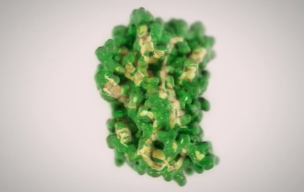ADDRESS THE ROOT CAUSE
BERINERT treats the root cause of C1-INH deficiency with rapid uptake of C1-INH
Most patients with HAE experience angioedema attacks because they lack functioning C1-INH. BERINERT replaces missing or dysfunctional C1-INH through an intravenous infusion, which quickly increases their C1-INH levels.
BERINERT addresses the problem of C1-INH deficiency by replacing missing or dysfunctional C1-INH
- C1-INH regulates multiple pathways
- Restoring C1-INH regulates the normal production of bradykinin generation1
- C1-INH decreases vascular permeability
IV DELIVERY OF C1-INH
Intravenous delivery provides quick uptake of C1-INH
A single dose of BERINERT IV provides a rapid increase in C1-INH levels*
Mean C1-INH activity over time in 23 patients2

Single dose, rapid uptake
In a prospective, randomized, open-label, crossover study, 23 subjects with mild or moderate HAE received a single dose of BERINERT (1000 units) IV or SC during an attack-free interval.2
References: 1. Fay A, Abinun M. Current management of hereditary angio-oedema (C’1 esterase inhibitor deficiency). J Clin Pathol. 2002;55(4):266-270.
2. Martinez-Saguer I, Cicardi M, Suffritti C, et al. Pharmacokinetics of plasma-derived C1-esterase inhibitor after subcutaneous versus intravenous administration in subjects with mild or moderate hereditary angioedema: the PASSION study. Transfusion.
2014;54:1552-1561.
2014;54:1552-1561.
| Adults (n=35) | Children (n=5)‡ | |
|---|---|---|
| AUC(0-t) (hr x IU/mL)† | 12.8 | 9.78 |
| Clearance (mL/hr/kg) | 1.44 | 1.9 |
| Volume at steady state (mL/kg) | 35.4 | 38.8 |
| Half-life (hr) | 18.4 | 16.7 |
| Mean residence time (hr) | 26.4 | 24.0 |
×

